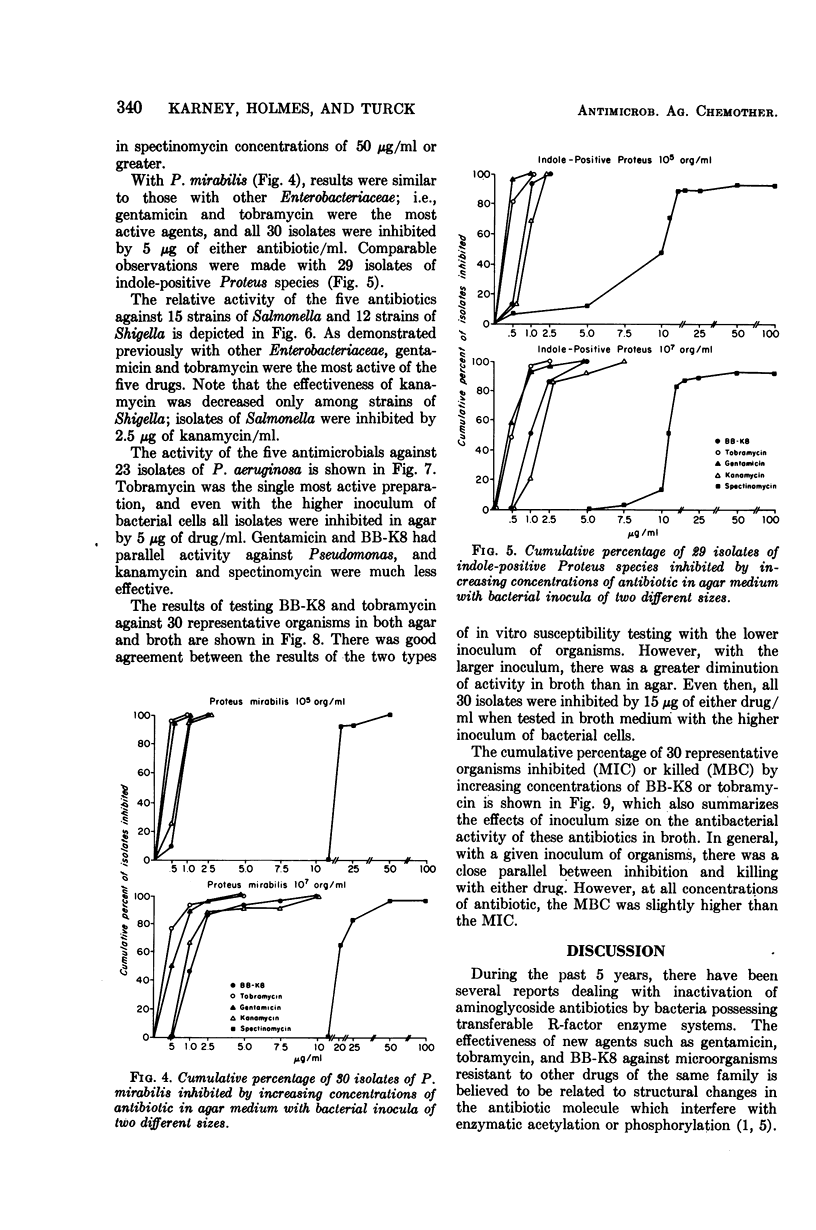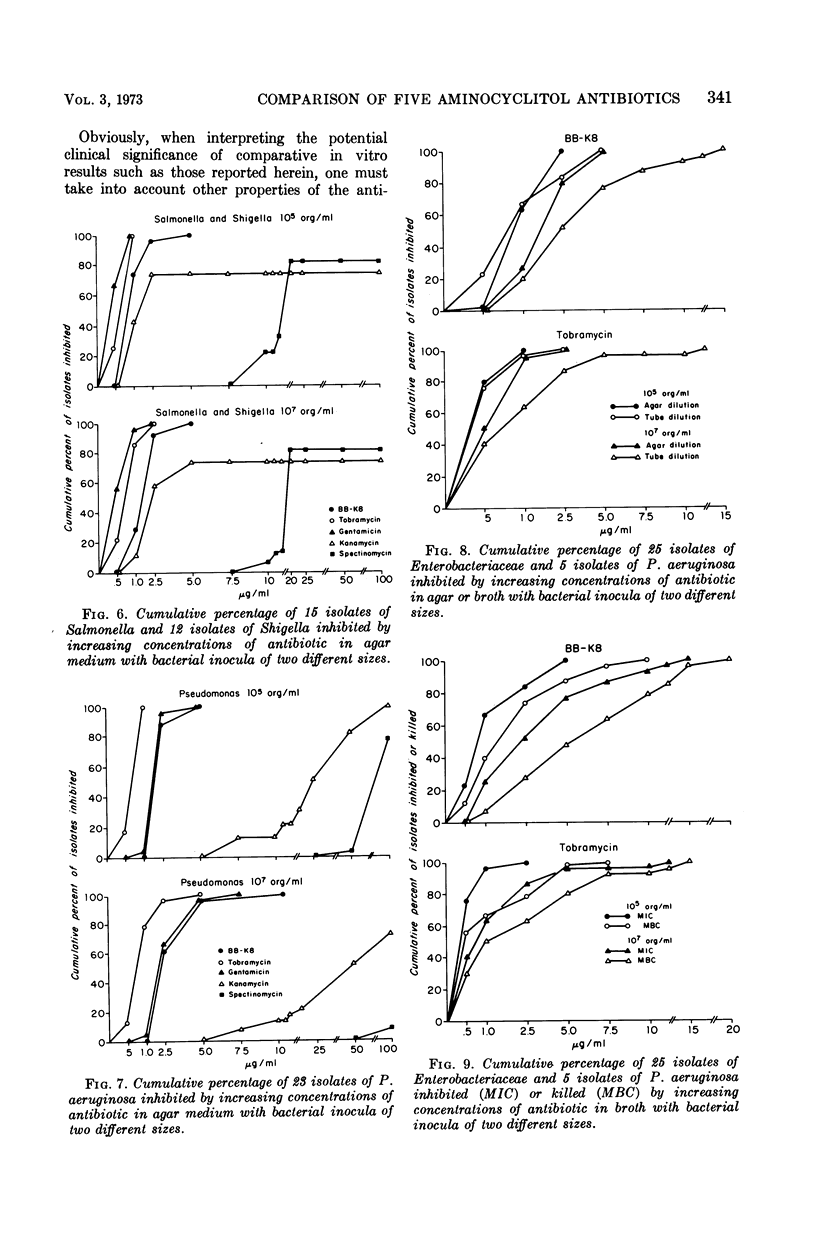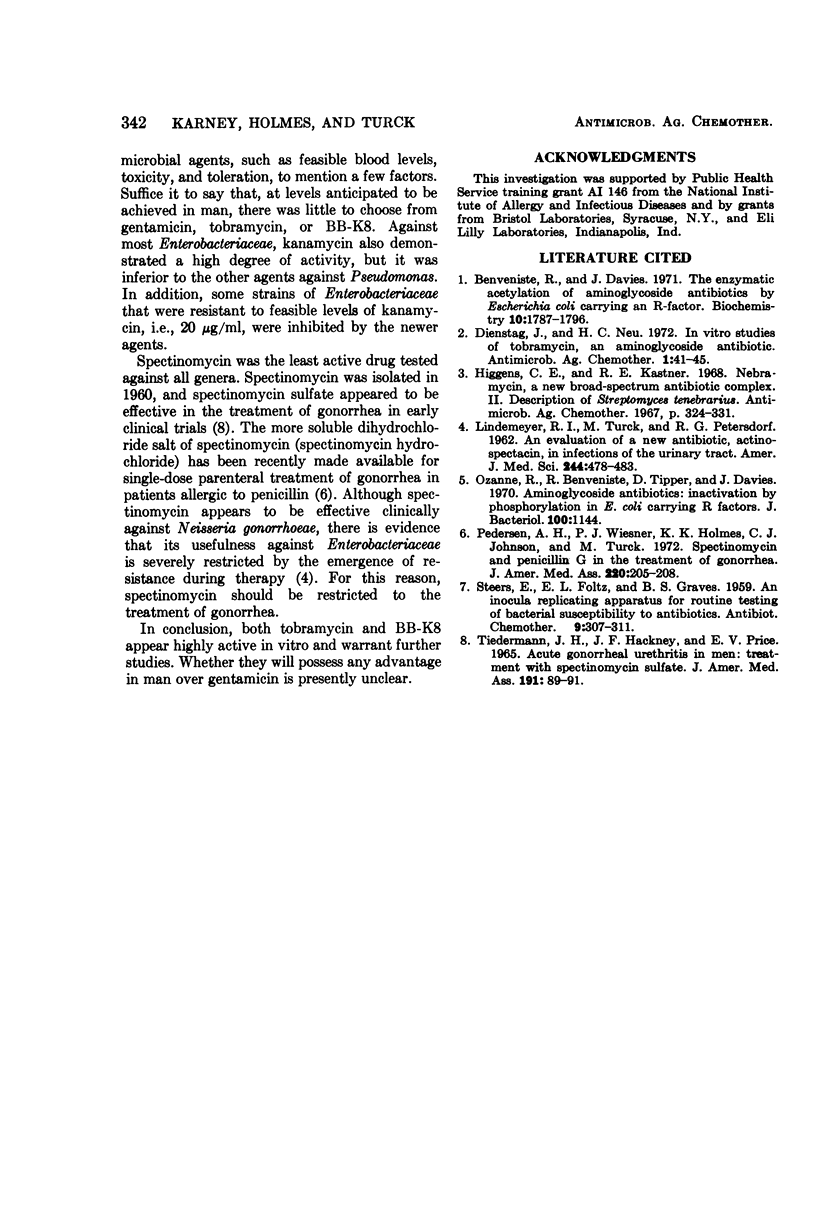Abstract
The in vitro susceptibility of 163 strains of Enterobacteriaceae and 23 isolates of Pseudomonas aeruginosa to various concentrations of gentamicin, kanamycin, spectinomycin, tobramycin, and BB-K8, a new semisynthetic aminoglycoside antibiotic, was determined. Studies were performed in Mueller-Hinton agar and broth, and two different sizes of bacterial inocula were used. On a weight basis, gentamicin and tobramycin demonstrated comparable activity in vitro and were the most active of the five drugs tested against Escherichia coli, Klebsiella, Enterobacter, and Proteus species. All of these organisms were inhibited by gentamicin or tobramycin at concentrations of 5.0 μg or less/ml in agar with both inocula of bacterial cells. In addition, tobramycin was the most active drug against isolates of P. aeruginosa and gentamicin was the most active against Salmonella and Shigella species. Although kanamycin and BB-K8 demonstrated a high degree of activity against most Enterobacteriaceae, they were not the most active agents tested for any genus. Spectinomycin was the least active compound, and many isolates grew in concentrations higher than those readily attainable in serum.
Full text
PDF




Selected References
These references are in PubMed. This may not be the complete list of references from this article.
- Benveniste R., Davies J. Enzymatic acetylation of aminoglycoside antibiotics by Escherichia coli carrying an R factor. Biochemistry. 1971 May 11;10(10):1787–1796. doi: 10.1021/bi00786a009. [DOI] [PubMed] [Google Scholar]
- Dienstag J., Neu H. C. In vitro studies of tobramycin, an aminoglycoside antibiotic. Antimicrob Agents Chemother. 1972 Jan;1(1):41–45. doi: 10.1128/aac.1.1.41. [DOI] [PMC free article] [PubMed] [Google Scholar]
- Higgins C. E., Kastner R. E. Nebramycin, a new broad-spectrum antibiotic complex. II. Description of Streptomyces tenebrarius. Antimicrob Agents Chemother (Bethesda) 1967;7:324–331. [PubMed] [Google Scholar]
- LINDEMEYER R. I., TURCK M., PETERSDORF R. G. An evaluation of a new antibiotic, actinospectacin, in infections of the urinary tract. Am J Med Sci. 1962 Oct;244:478–483. [PubMed] [Google Scholar]
- Ozanne B., Benveniste R., Tipper D., Davies J. Aminoglycoside antibiotics: inactivation by phosphorylation in Escherichia coli carrying R factors. J Bacteriol. 1969 Nov;100(2):1144–1146. doi: 10.1128/jb.100.2.1144-1146.1969. [DOI] [PMC free article] [PubMed] [Google Scholar]
- Pedersen A. H., Wiesner P. J., Holmes K. K., Johnson C. J., Turck M. Spectinomycin and penicillin G in the treatment of gonorrhea. A comparative evaluation. JAMA. 1972 Apr 10;220(2):205–208. [PubMed] [Google Scholar]
- TIEDEMANN J. H., HACKNEY J. F., PRICE E. V. ACUTE GONORRHEAL URETHRITIS IN MEN. TREATMENT WITH SPECTINOMYCIN SULFATE. JAMA. 1965 Jan 11;191:89–91. doi: 10.1001/jama.1965.03080020017005. [DOI] [PubMed] [Google Scholar]


